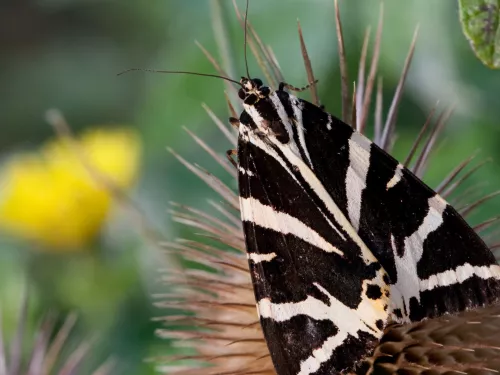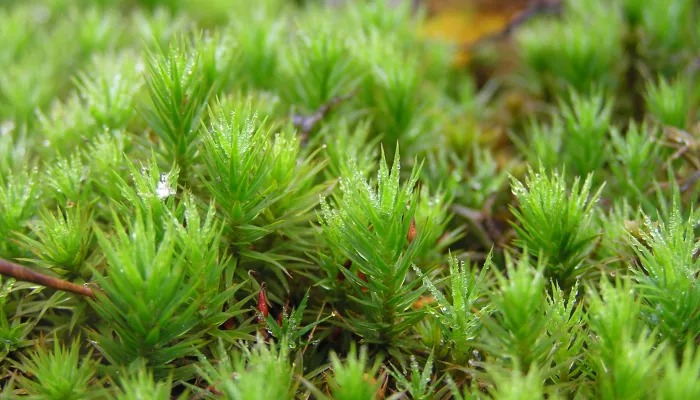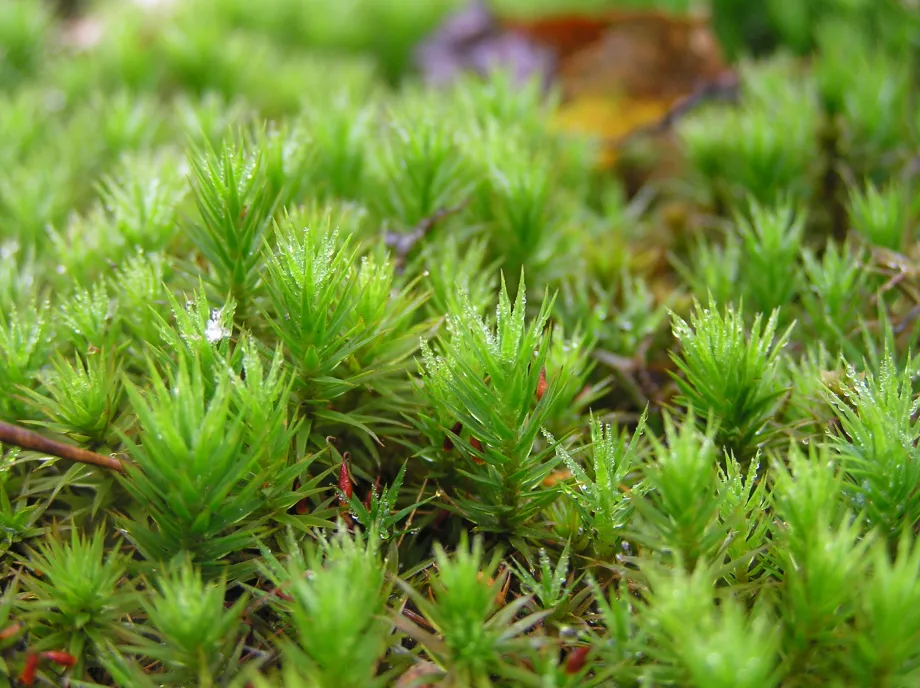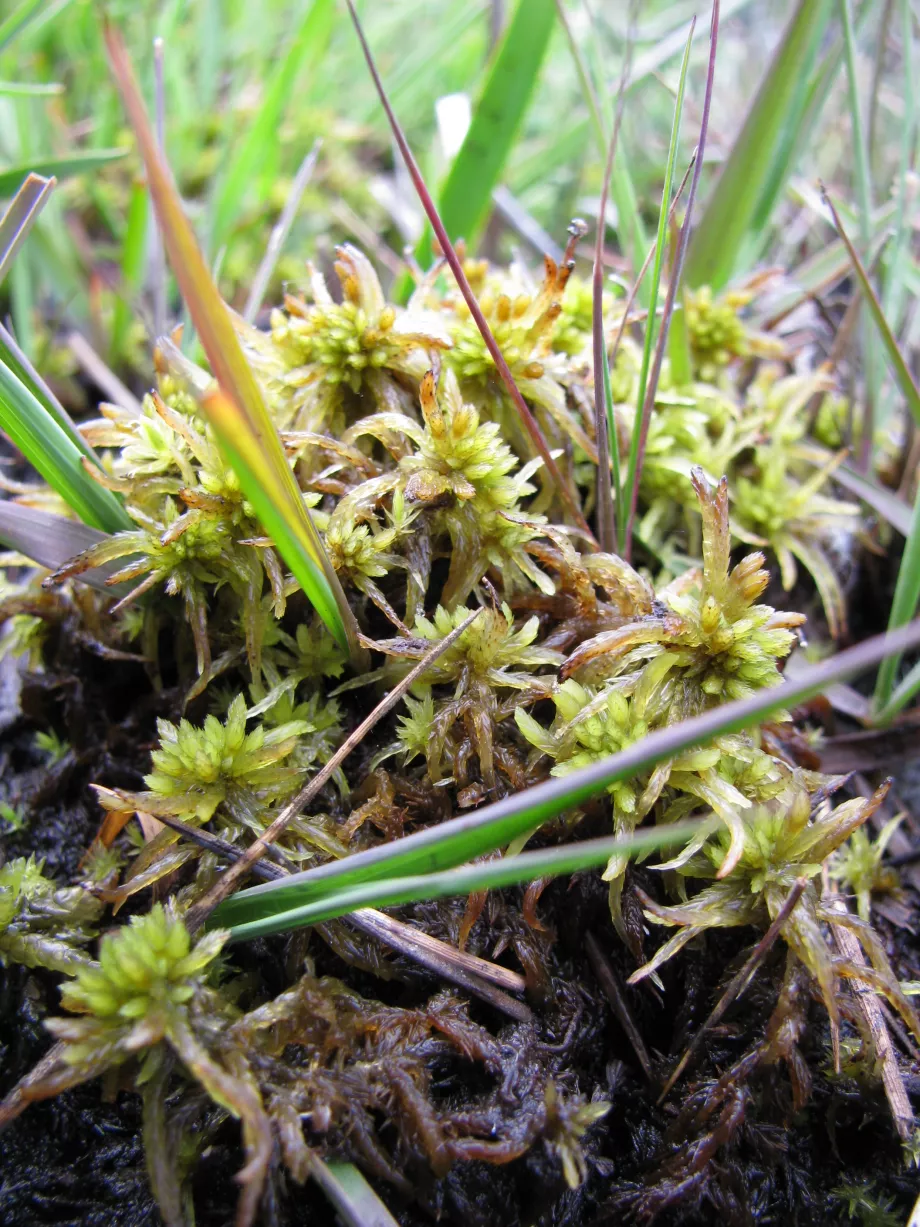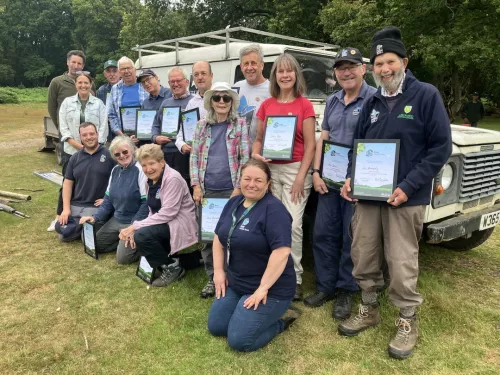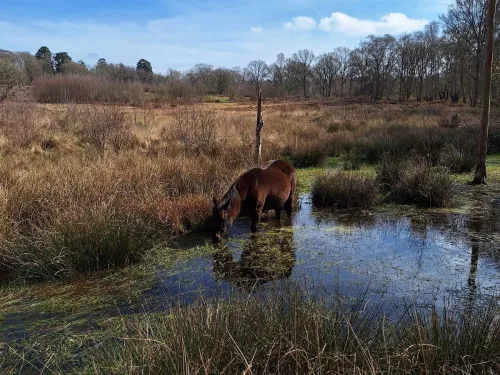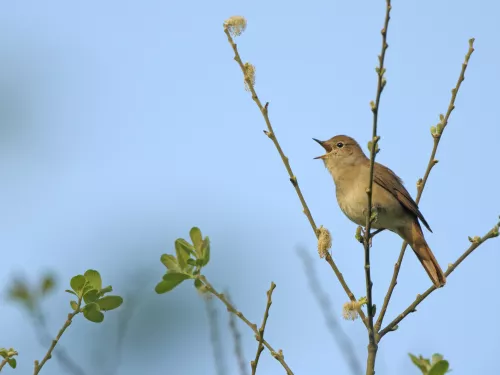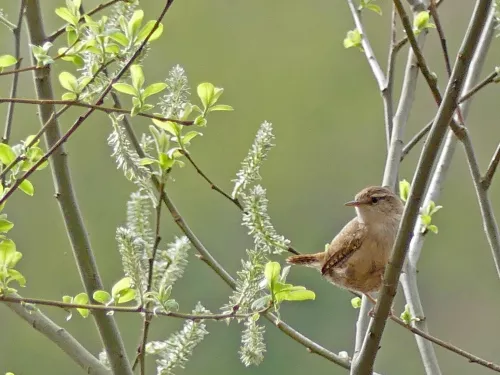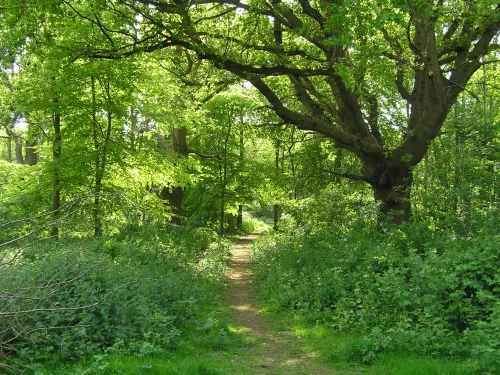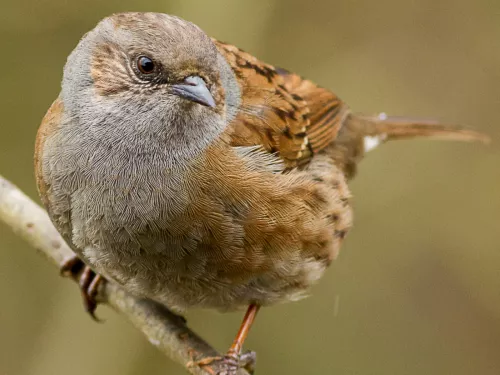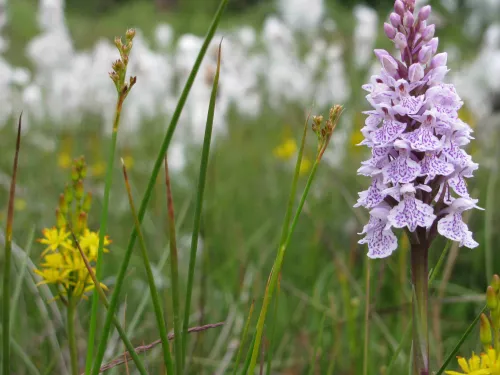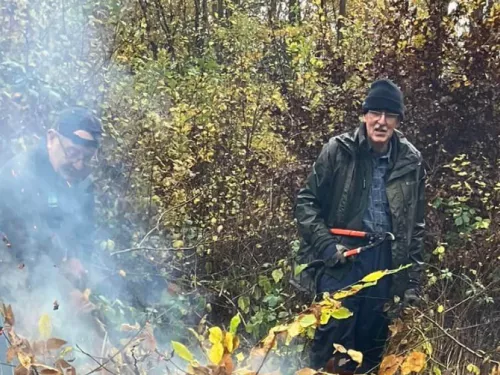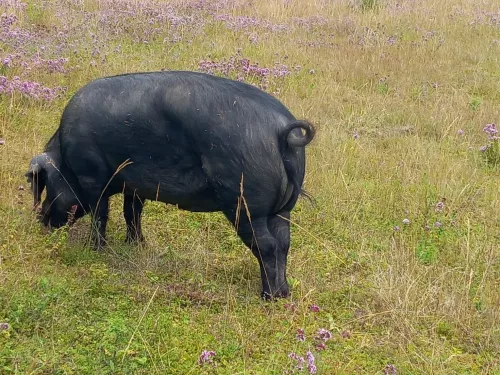In mid-January as water actually trickled through the top bog and lay glinting on all flat ground, Ian Rickards commented “We've had some impressive flooding, especially on the extension fields. Areas like this are so important for storing flood water and preventing problems to housing and farmland.” The reserve’s capacity to hold water was increased in January by a big yellow digger rooting through bracken, brambles and birch trees and enriched topsoil, piling the debris into banks and leaving new pools and areas of exposed bare soil open to germination by new plants. This restoration of bog habitat will encourage the more fragile plant and insect species adapted to this habitat to flourish.
The digger is a sped-up version of the action of the wild animals – Ian was thinking boar, I was thinking bison – that would have roamed here, toppling trees, trampling, rooting and scraping the ground. We look forward to seeing what appears this spring and summer. Unfortunately, the Kent Wildlife Trust bison will be restricted to our Blean Woodland reserve near Canterbury.
